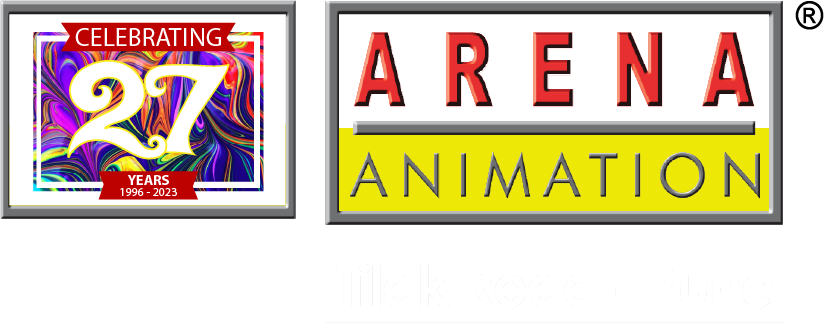What is motion graphics?
“Motion Graphics, a compelling form of visual communication, involve the animation of visual content to convey stories, messages, and enhance the overall viewer experience. They seamlessly blend text, images, music, and artwork to create captivating and dynamic visual narratives. To illustrate, picture a video that integrates moving text, animated logos, transitions, and dynamic graphics to convey ideas or promote a product.
What is infographics?
As for infographics, they serve as visual representations of data, facts, or information, designed to simplify complex concepts in an easily understandable, concise, and visually appealing manner. Utilizing images, graphics, diagrams, symbols, and minimal text, infographics effectively communicate ideas, making them clear and engaging. They are commonly employed for analyzing data, elucidating intricate systems, storytelling, and simplifying complex information.”
Key Components of an Infographic:
Visual Elements: Enhance accessibility and engagement through designs, symbols, pictures, and illustrations.
Text: Facilitate understanding with concise language, offering labels, explanations, and background information.
Diagrams and Charts: Improve data visualization through various charts, graphs, and diagrams depicting patterns, comparisons, or proportions.
Flow and Structure: Ensure clarity and cohesion with thoughtful organization, guiding viewers logically through the content.
Importance of Motion Graphics and Infographics
In visual communication, both assets play vital roles, each with unique advantages. Let’s delve into their significance.
Motion Graphics: Dynamically transform objects over time, adding life and impact, often accompanied by narratives or music.
Infographics: Visually represent data statically, using charts, graphs, symbols, and images, without involving movement.
Strategically using both in digital marketing can significantly enhance engagement and effective information conveyance.
Interactivity:
“Motion Graphics: These are pre-planned animations, typically passive, not requiring viewer interaction, telling stories with animation, transitions, and visual effects.
Infographics: While also passive, infographics may include interactive elements for further exploration.
Communication Approach:
Motion Graphics : employ animation, transitions, and dynamic elements to effectively narrate stories and convey messages, often incorporating visual effects to enhance emotional engagement.
Infographics : In contrast, Infographics offer a structured and visually oriented means to present information, facts, or data, with a layout that highlights key aspects for easy comprehension and clarity.
Complexity and Specifics:
Motion Graphics: Dynamic visuals allow intricate designs with complex actions and enhancements.
Infographics: Emphasizing simplicity, they offer a straightforward style for data presentation.
Term of Commitment:
Motion Graphics: Employ animation to maintain audience interest, encouraging longer viewing.
Infographics: No time constraints, enabling quicker engagement.
Use and Execution:
Motion Graphics: Applied in films, commercials, media, and storytelling to impact communication.
Infographics: Used in publications, reports, presentations, and websites for elegant data communication.
Indeed, both Motion Graphics and Infographics offer promising and satisfying professional prospects, particularly in the present advanced age where visual communication is exceptionally esteemed. Here’s the reason a career opportunities in either field can reward:
Popularity:
Visual content is an increasingly potent tool for diverse
organizations. Infographics and Motion Graphics are in high demand for data analysis, presentations, marketing, advertising, and education.
Association and Communication:
Visual materials engage and convey ideas more effectively than text. Experts in Infographics and
Motion Graphics craft compelling and logical content.
Adaptability:
Infographics and Motion Graphics flexibly serve various media: web, virtual environments, TV, presentations, textbooks, and more. Their versatility offers extensive possibilities and applications.
Innovative Communication:
Both disciplines allow ample room for creative expression and innovation. Specialists can experiment with layouts, variations,
animations, and designs to convey their messages effectively.
Expertise Improvement:
Capability in an assortment of programming devices, visual communication, movement, video altering, story, information examination, and animation are only a couple of the capacities that might be created through work-moving Motion Graphics or Infographics.
Career Opportunities:
Profession Development and Open Doors: Those in motion graphics and infographics can advance to senior roles like art director or creative director or specialize in areas like 3D animation or data visualization with expertise and a strong portfolio.
Opportunities for Self-Employment:
Self-Employment Options: Many infographics and motion graphics experts often work as freelancers, granting them the flexibility to select projects aligned with their skills and interests.
Placement Help:
Numerous reputable institutions offer job
placement assistance, facilitating connections with firms seeking motion graphics and infographics professionals, thus opening valuable doors.
Consistent Learning and the Evolving Industry:
Continuous Learning and Evolving Industry: As technology and design trends evolve, so do infographics and motion graphics fields. This creates opportunities for ongoing education and staying updated on new techniques and tools.
Success in these fields relies on maintaining a robust portfolio, staying abreast of industry trends, continuously honing skills, and networking with peers. In visual communication, careers in motion graphics, infographics, or both can be personally and professionally rewarding.
